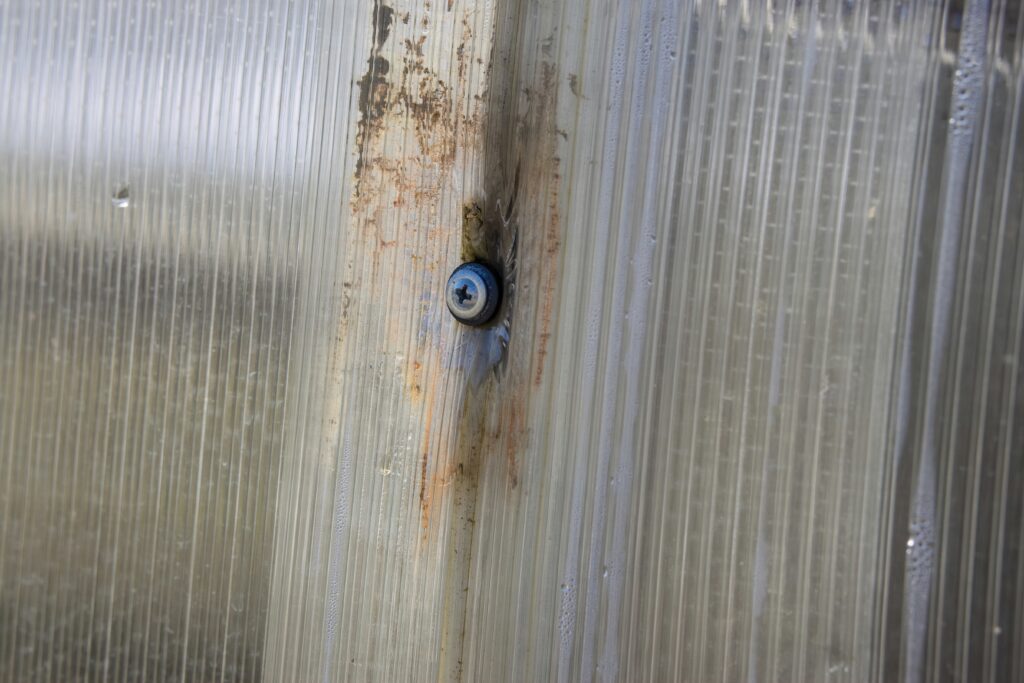More often than not, homeowners rarely take note of weather effects until they already experience its damages. However, upon taking note of its effects, it will be too late and their skylight roof is now bound to a costly repair. While the Philippines is subjected to only two seasons: wet and dry season, as compared to other countries who are susceptible to hailstorms, snow, etc, it is still essential to know about these potential damages so you can decide which material is best for you.
- Heat Damage: The lifespan of a roof can be reduced to a mere half because of heat damages. Take note of the areas that are constantly exposed to the sun. It will most likely deteriorate faster than the shaded areas. The following are the most common harmful effects caused by exposure to the sun:
- Brittleness: Prolonged exposure to UV radiation can cause brittleness. Moreover, prolonged exposure to heat can cause the roof to expand, which leads to cracks on the roof if the screws were too tight. The cracks will either be an entryway for moisture to seep in and cause mosses on the surface, or make the roof susceptible to heavy impact. A brittle roof cannot hold off against harsher weather conditions, such as heavy rain and strong winds.
- Bleaching: Colored roofs are susceptible to these changes, however, clear or transparent roofs can be affected just the same. Constant UV radiation can cause darker colored sheets to fade while it can cause yellowing or discoloration on clear or white sheets. Bleaching may not directly affect the structural integrity of your roof, but it will leave your roof looking old and drab.
- Wind Damage- The Philippines is located along the typhoon belt in the Pacific, so 20 typhoons in a span of 1 year is common. Strong winds can cause both slow and abrupt damage to your roof. You may notice the roofs to slowly disentangle from its frames, which is why it is important to install your roofs correctly, and check for damages every now and then. Strong winds brought by the monsoon rains, typhoons, and tropical storms can lift off heavy objects, bring trees down, and fly off other elements to your polycarbonate roof. If your polycarbonate roof can be found faulty in any way, e.g., brittled due to UV radiation, subjected to wrong installation, etc, then it will be prone to damage. Strong wind can tear away light roofs, especially those which are already old and loose. Strong winds can also hurl debris at your roof and cause punctures, tears, and other problems.
- Rain Damage- The susceptibility to strong rains calls for a roofing material that is durable and impact resistant. Moisture damage is most likely the result of heavy rains in your roof. Faulty installations can cause moss and lichens to grow in between the sheets of twin wall polycarbonate if there were no preventive measures taken place. This would greatly affect the visual appearance of your exterior. The rain, when paired with heavy wind, has the potential for greater damage. Wind can pull up the roofing material and can cause the rain to seep in and cause leaks.
What can you do as a homeowner?
Should you then give up on having a skylight roof? No. The key is to choose a roofing material that is durable, impact-resistant, and UV resistant to guard against all these weather conditions. Polycarbonate sheets are 250-300 times stronger than glass, which means that it can withstand cracks from sudden heavy impacts. There is no need to worry since all types of polycarbonate roofs (solid polycarbonate, twin wall polycarbonate, corrugated polycarbonate sheet, and embossed and corrugated) are equipped with UV protection layer that keeps the roof from discoloration and brittleness, even when placed under prolonged heat exposure.

Roofing damages can turn into an instant disaster if taken lightly. The Philippine weather makes your skylight roofs susceptible to these changes, so it is necessary to make sure that your roofs are made of the best durable material, are properly installed, and that you keep your eyes wary of roofing signs that may lead to a bigger destruction. Duralon is one of the most trusted polycarbonate suppliers in the Philippines. Contact us for more inquiries.

